Ecosystem & Food Chain | Science Class 10 PDF Download
What is the Environment?
Everything which surrounds and influences the organism directly or indirectly is included in the environment.
OR
The environment is the sum total of all living and non-living factor that surround and influence an organism.
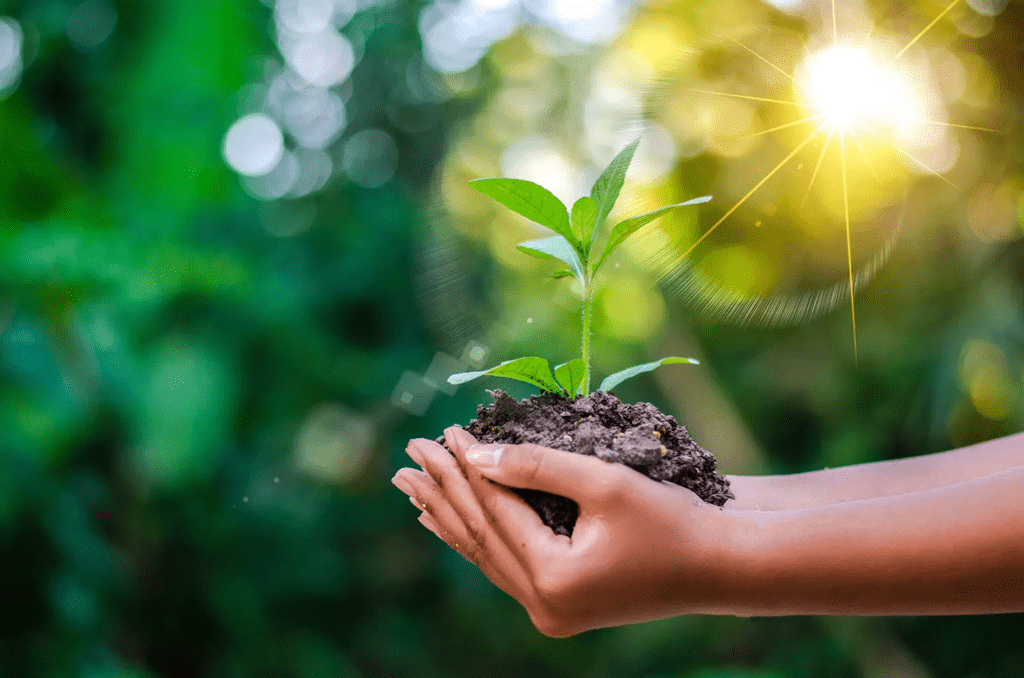
The word Environment is derived from the French word “Environ” which meaning “surrounding.”
Components of Environment
The components of the environment are mainly divided into two categories:
- Biotic environment: It includes all living organisms such as animals, birds, forests, insects, reptiles and microorganisms like algae, bacteria, fungus, viruses, etc.
- Abiotic environment: It includes all non-living components such as air, cloud, dust, land, mountains, rivers, temperature, humidity, water, water vapour, sand, etc.
What is Ecology?
Ecology means the study of habitat or living place of organisms or the study of organisms at home.
OR
The study of inter-relationships of organisms between the biotic and abiotic components of their environment
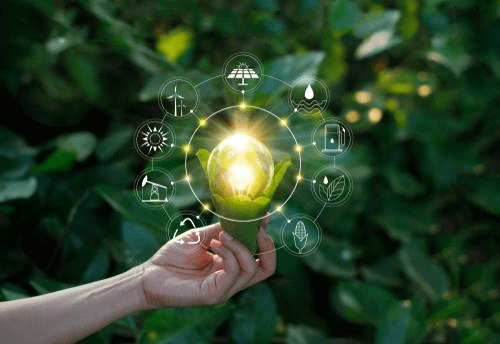
The 'Ecology' term was coined by Ernst Haeckel (1868).
What is an Ecosystem?
An ecosystem is defined as a community of lifeforms in concurrence with non-living components, interacting with each other.
According to Eugene P. Odum:
Ecosystem is the basic unit of ecology and the biotic and abiotic components present in it influence each other. Both the components are essential for the sustenance of life.
- The ecosystem is the structural & functional unit of the biosphere.
- It has the property of self-perpetuation.
- It is an open system and depends on sunlight.
- It may be small and also very large.
- Ecosystem term coined by Sir Arthur Tansley (1935).
Types of Ecosystem
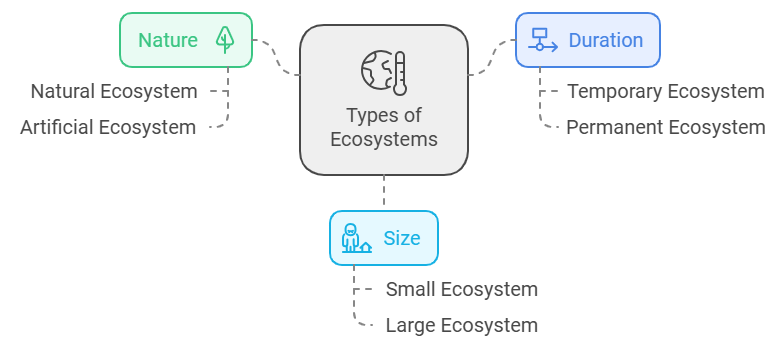 In the biosphere, the ecosystem may be classified on the basis of its nature, duration and size:
In the biosphere, the ecosystem may be classified on the basis of its nature, duration and size:
There are two main types of ecosystem on the basis of their nature:
- Natural ecosystem: It is a naturally produced biological environment found in nature. It includes deserts, forests, grasslands, lakes, mountains, ponds, rivers, oceans, etc
- Artificial ecosystem: It is an artificial environment that is created and maintained by man. It includes an aquarium, crop fields, gardens, parks, zoo, etc.
There are two types of ecosystem on the basis of duration:
- Temporary ecosystem: It is short-lived and man-made or natural.
Example: short-lived ecosystem & rainfed pond - Permanent ecosystem: It is a long-lived and self-supported natural ecosystem for a very long period.
Example: a lake, a forest, a desert
There are two types of ecosystem on the basis of size:
- Small ecosystem: It is small and also known as a micro-ecosystem. It can be temporary or permanent.
Example: flowerpot, water in a dish. - Large ecosystem: It is large in size and also known as a macro ecosystem. It is always permanent and mostly natural.
Example: forest, desert, ocean.
Structure of the Ecosystem
The structure of an ecosystem is characterised by the organisation of both biotic and abiotic components. This includes the distribution of energy in our environment. It also includes the climatic conditions prevailing in that particular environment.
The structure of an ecosystem can be split into two main components, namely:
- Biotic Components
- Abiotic Components
The biotic and abiotic components are interrelated in an ecosystem. It is an open system where the energy and components can flow throughout the boundaries.
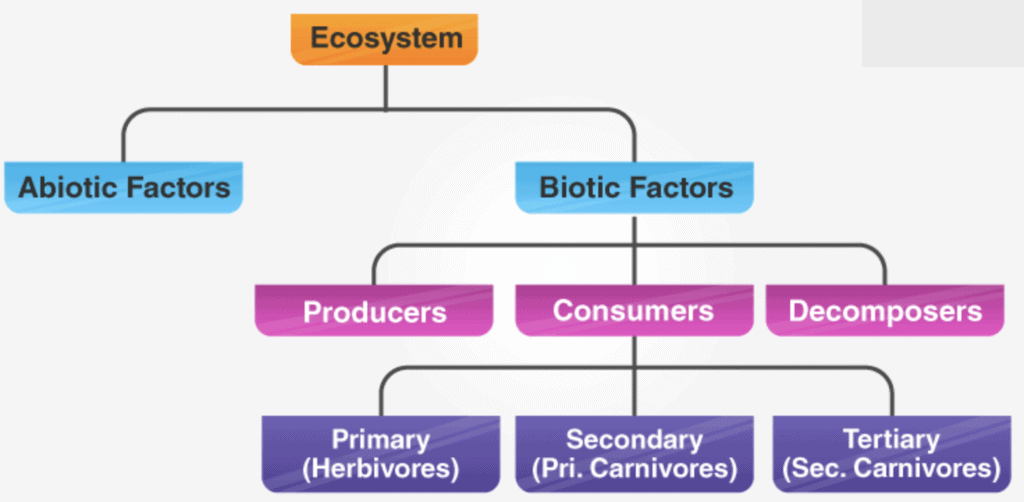
Biotic Components
Biotic components refer to all life in an ecosystem.
Based on nutrition, biotic components can be categorised into autotrophs, heterotrophs and saprotrophs (or decomposers).
1. Producers include all autotrophs such as plants. They are called autotrophs as they can produce food through the process of photosynthesis. Consequently, all other organisms higher up on the food chain rely on producers for food.
2. Consumers or heterotrophs are organisms that depend on other organisms for food. Consumers are further classified into primary consumers, secondary consumers and tertiary consumers.
- Primary consumers are always herbivores that they rely on producers for food.
- Secondary consumers depend on primary consumers for energy. They can either be a carnivore or an omnivore.
- Tertiary consumers are organisms that depend on secondary consumers for food. Tertiary consumers can also be an omnivore.
- Quaternary consumers are present in some food chains. These organisms prey on tertiary consumers for energy. Furthermore, they are usually at the top of a food chain as they have no natural predators.
3. Decomposers include saprophytes such as fungi and bacteria. They directly thrive on the dead and decaying organic matter. Decomposers are essential for the ecosystem as they help in recycling nutrients to be reused by plants.
Abiotic Components
Abiotic components are the non-living component of an ecosystem.
It includes air, water, soil, minerals, sunlight, temperature, nutrients, wind, altitude, turbidity, etc.
Competition Window
Parasites : These organisms live on or inside the body of other organisms to obtain their food e.g._ Escherichia coli (bacteria) tapeworm.
Detritivorous : These are organisms which feed on detritus (dead remains of plants & animals)
They are also called as scavengers
What is Food Chain?
- It is a sequence of organisms through which energy is transferred in the form of food by the process of one organism consuming the other.
OR - A list of organisms [living beings] showing "who eats whom" is called a food chain.
- A food chain represents a unidirectional transfer of energy.
- All the food chains begin with green plants.
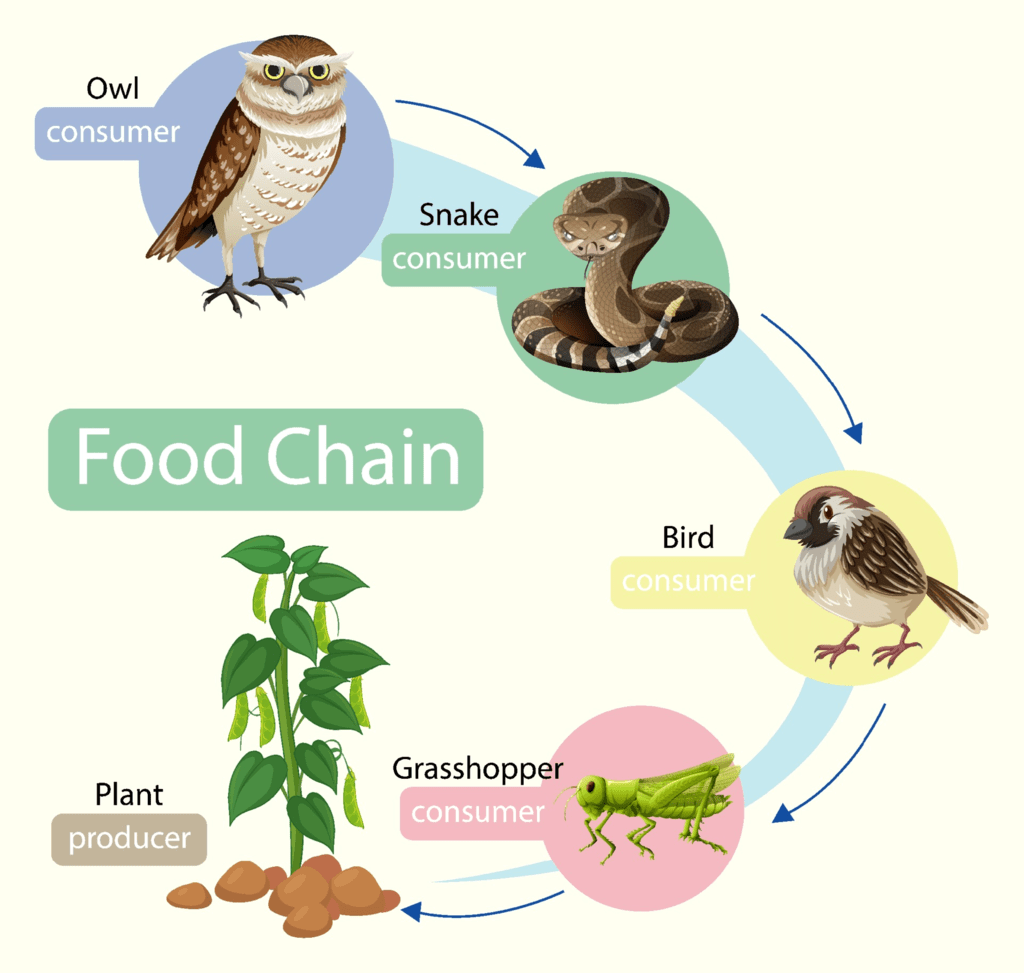
Characteristics of Food Chain
- A food chain involves a nutritive interaction between the living organisms (biotic components) of an ecosystem in a food chain, there occurs repeated eating, i.e., each group eats the other group and subsequently is taken by some other group organisms.
- A food chain is always straight and proceeds in a progressive straight line.
- In a food chain, there is the unidirectional flow of energy from sun to producers and subsequently to series of different types of consumers.
- Usually, there are 3 or 4 trophic levels in the food chain. In few chains, there may be a maximum of 5 tropic levels.
- Some organisms are omnivores. These occupy different trophic positions in different food chains.
- At each transfer, generally, 80-90% of energy is lost as heat in accordance with the second law of thermodynamics.
Types of Food Chain
There are two types of food chains, namely the detritus food chain and the grazing food chain. 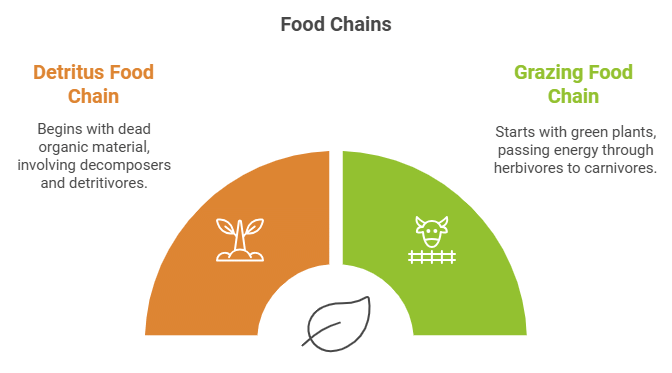
- Detritus food chain: The detritus food chain includes different species of organisms and plants like algae, bacteria, fungi, protozoa, mites, insects, worms and so on. The detritus food chain begins with dead organic material. The food energy passes into decomposers and detritivores, which are further eaten by smaller organisms like carnivores. Carnivores, like maggots, become a meal for bigger carnivores like frogs, snakes and so on. Primary consumers like fungi, bacteria, protozoans, and so on are detritivores that feed on detritus.
- Grazing food chain: The grazing food chain is a type of food chain that starts with green plants, passes through herbivores and then to carnivores. In a grazing food chain, energy in the lowest trophic level is acquired from photosynthesis.
In this type of food chain, the first energy transfer is from plants to herbivores. This type of food chain depends on the flow of energy from autotrophs to herbivores. As autotrophs are the base for all ecosystems on earth, the majority of ecosystems in the environment follow this kind of food chain.
Significance of Food Chains
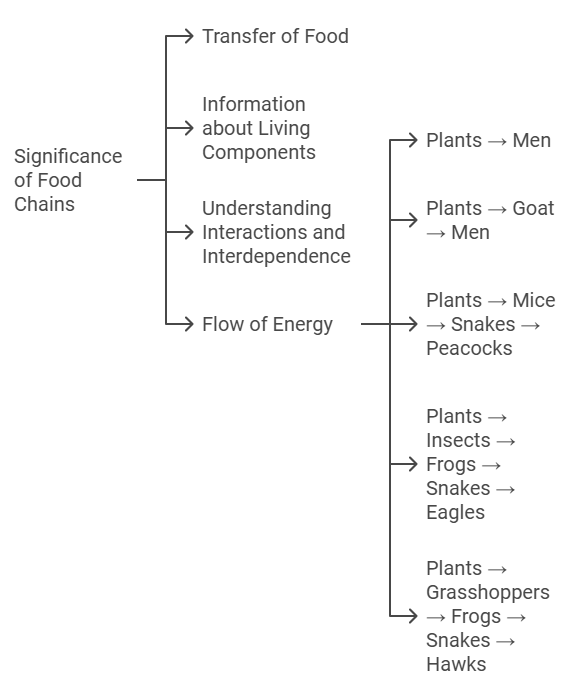
The significance of food chains can be seen with the help of the following functions:-
- It is a means of transfer of food from one trophic level to another.
- It provides information about the living components of an ecosystem.
- It helps us in understanding the interactions and interdependence amongst different organisms in an ecosystem.
- It is a pathway for the flow of energy in any ecosystem.
Plants → Men (Two trophic levels)
Plants → Goat → Men (Three trophic levels)
Plants → Mice → Snakes → Peacocks (Four trophic levels)
Plants → Insects → Frogs → Snakes → Eagles (Five trophic levels)
Plants → Grasshoppers → Frogs → Snakes → Hawks (Five trophic levels)
What are Trophic levels?
The distinct sequential steps in the food chain where the transfer of energy occurs are referred to as different trophic levels.
Example:
- Green plants (producers) form the first trophic level - the producer level;
- the plant eaters (herbivores), also called primary consumers, belong to the second trophic level - the primary consumer level;
- the flesh-eaters (carnivores), also called secondary consumers, represent the third consumer level - the secondary consumer level and so on.
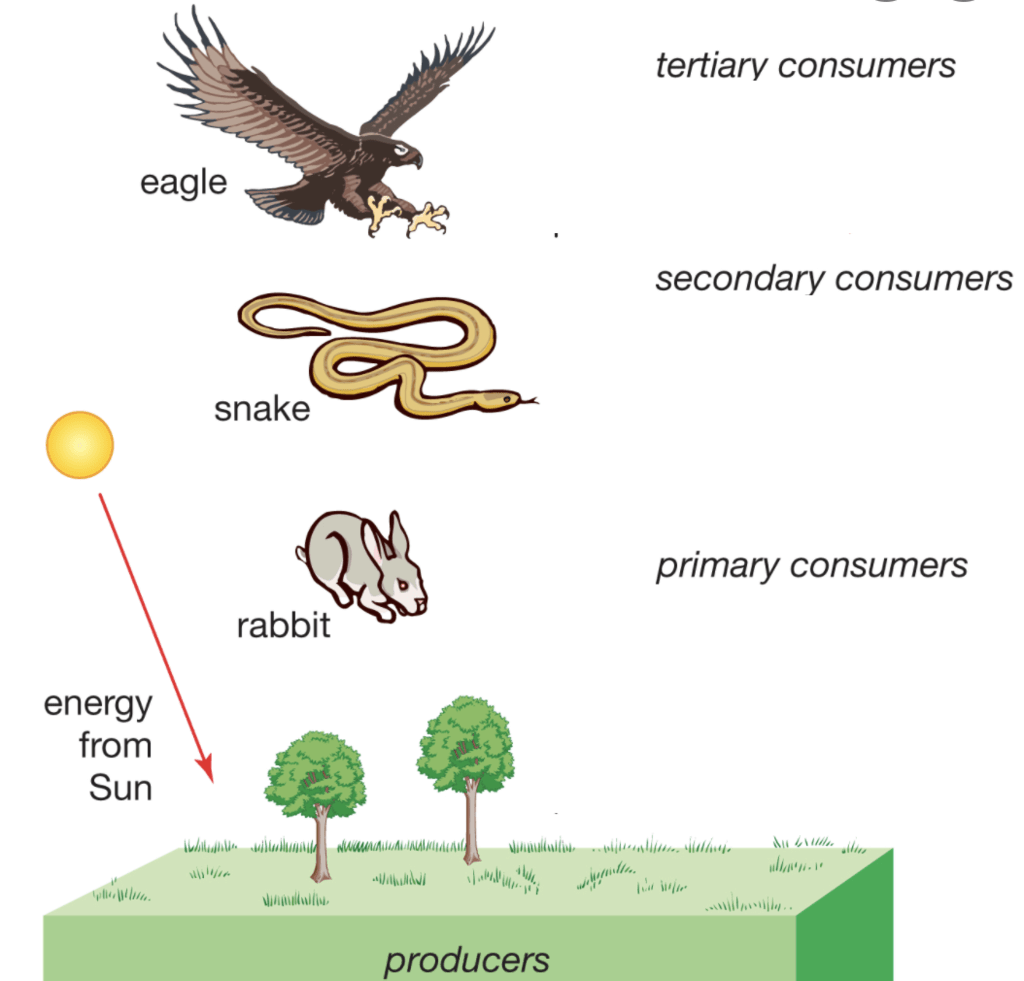
What is the Food Web?
The inter-connected food chains operating in an ecosystem that establish a network of relationships between various species is called a food web.
OR
The network of a large number of food chains existing in an ecosystem is called a food web.
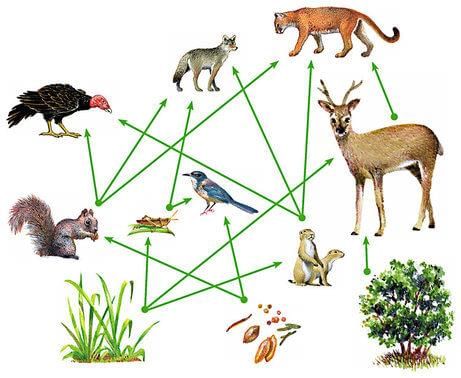
Different between Food Chain and Food Web
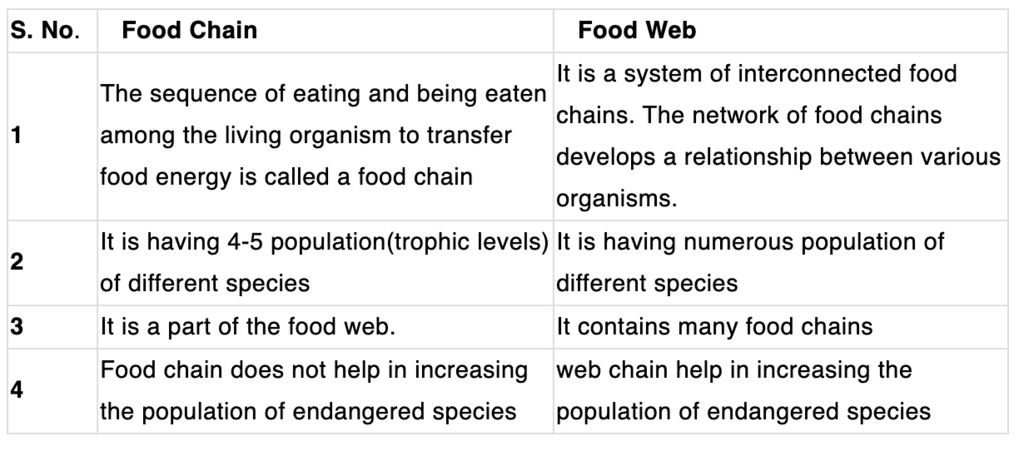
What is the Ten Percent law?
- It was put forth by Lindeman (1942). It is also termed the second law of thermodynamics or the law of entropy.
- According to this law, the transfer of energy from one trophic level to other trophic level is never 100 per cent. It is so because most of the energy gets lost as heat in the environment during each transfer. On average, about 10% of energy is actually available to the next trophic level.
Flow (Transfer) of energy in an ecosystem
Each organism needs the energy to carry on vital activities, and for building up and repairing the body tissues.
- The ultimate source of entire energy, used by living organisms, is the sun
- In a community, each food chain, in fact, represents a stepwise transfer of food (energy).
- Of the total solar radiations falling on the earth, only about 1% is captured by green plants in a terrestrial ecosystem and converted into food energy by photosynthesis. This energy is stored as the chemical energy of food.
- When green plants are eaten by herbivores (primary consumers), a great of energy is lost as heat to the environment in accordance with the second law of thermodynamics. On average, 10% of the food (energy) is turned into a body of herbivores. In the same way, 10% of total energy available to the herbivores is made available for the next level of consumers. In other words, on average, 10% of the amount of organic matter that is present at each step reaches the next consumer level.
- Since the amount of available energy goes on decreasing at each trophic level, food chains usually consist of only 3 or 4 steps and rarely a maximum of 5 steps.
- In an ecosystem, generally, the producers are maximum in number. As we move along the chain, the number of individuals at each trophic level decreases.
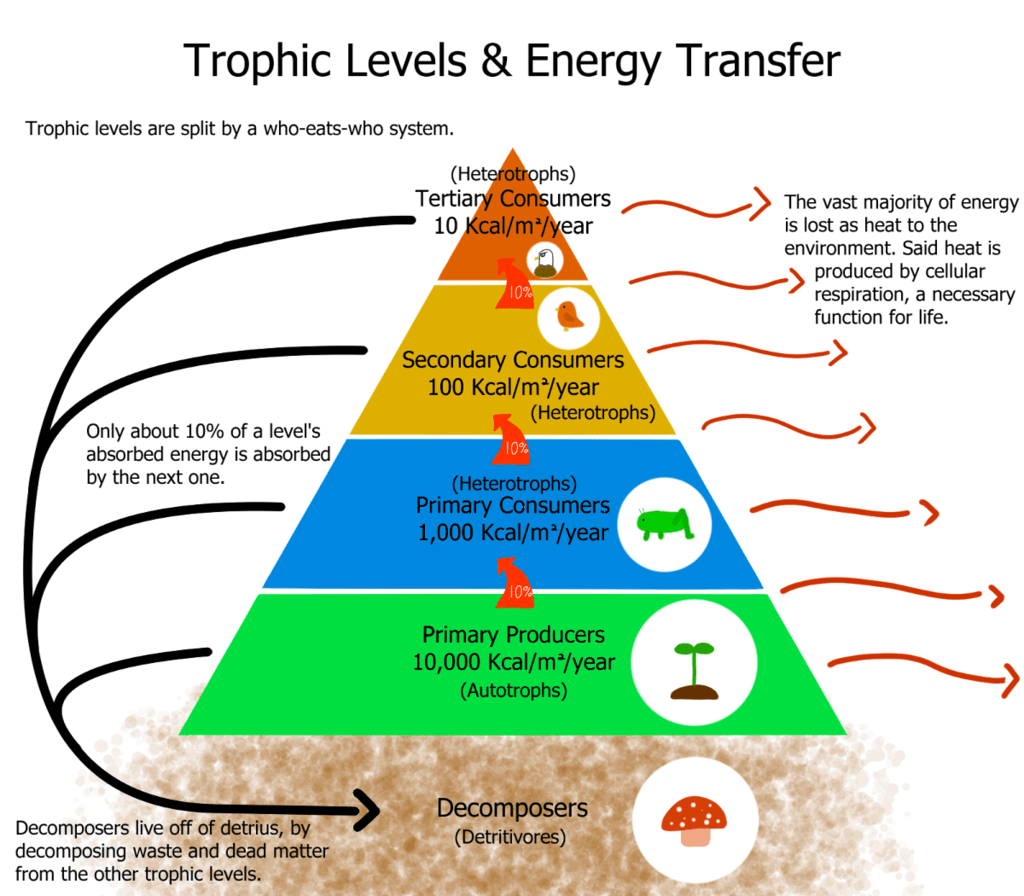
Do you know?
- In an ecosystem, energy comes from the sunlight. It is converted from one form to another.
- Energy gets continuously transferred from one trophic level to another by repeated eating in a food chain.
- There occurs loss of energy as heat at each step of energy transfer (trophic level) in the environment.
- On average, about 10% of available energy actually gets transferred from one trophic level to another in a food chain. This limits the steps to the maximum of 4 or 5 in the food chain.
- The phenomenon that involves a progressive increase in the concentration of the harmful non-biodegradable chemical at different trophic levels in a food chain is called biomagnification.
|
80 videos|565 docs|80 tests
|
FAQs on Ecosystem & Food Chain - Science Class 10
| 1. What is the definition of Environment? |  |
| 2. What are the main components of the environment? |  |
| 3. What is the difference between Ecology and an Ecosystem? |  |
| 4. What are the different types of ecosystems? |  |
| 5. What is the Ten Percent Law in ecology? |  |

















